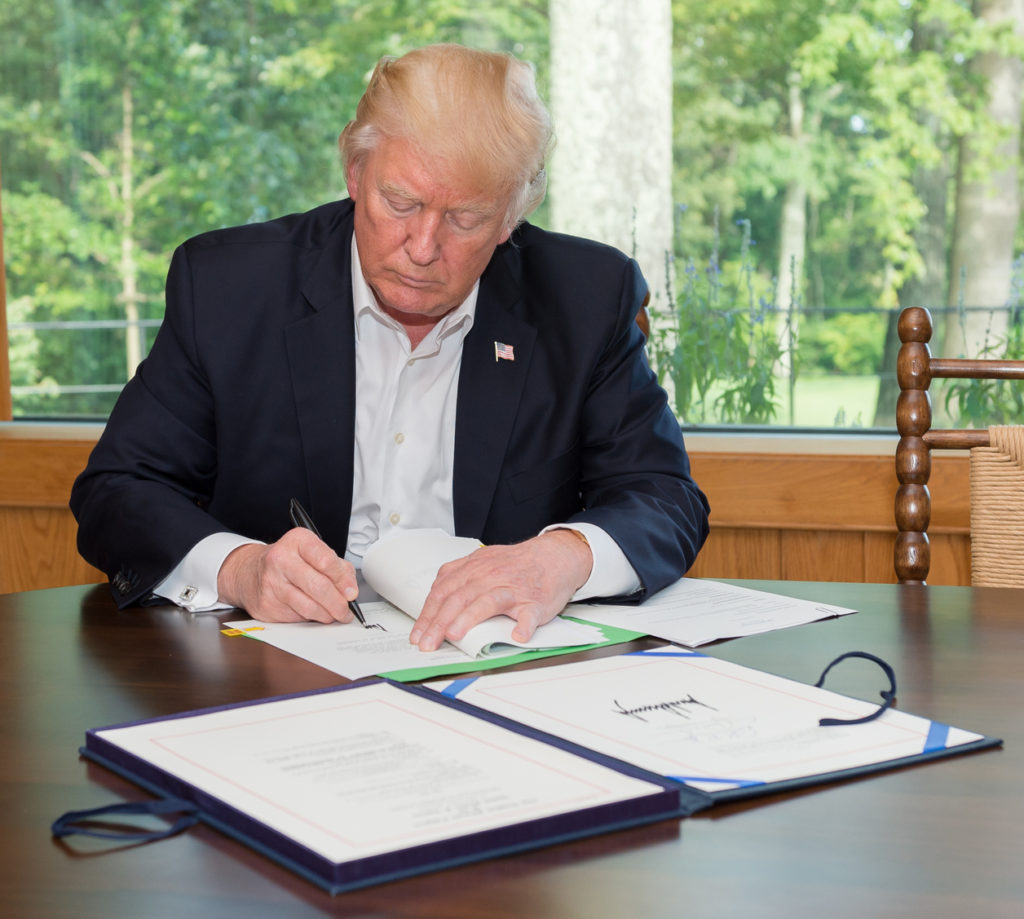When Trump was elected, many people were wondering what he could do. One of the things he has done is Presidential Orders. They are an act of power given to a president to exercise his rights in particular issues.
According to historical facts, “The first executive order was issued by Washington on June 8, 1789; addressed to the heads of the federal departments, it instructed them ‘to impress me with a full, precise, and distinct general idea of the affairs of the United States in their fields”.

What is an executive order?
An executive order is defined as “issuing federal directives in the United States, used by the President of the United States, that manages operations of the federal government” [Source]. It can be described as “an ordinance issued on the authority of the head of the executive branch of government.” In other views, an executive order is an order rolled out by the American president.
Is it possible to overturn presidential executive orders?
It is noted that “Presidential executive orders, once issued, remain in force until they are canceled, revoked, adjudicated unlawful, or expire on their terms” [Source].
In an article titled “There are three ways to revoke a US president’s executive orders, and they rarely succeed,” Sarah Kessler, deputy editor at Quartz, listed three ways of revoking these orders as follows.”
- The president can revoke, modify, or supersede any executive order
- Congress can revoke, modify, or supersede an executive order
- Courts can declare an executive order illegal or unconstitutional
This means that a presidential order can be overturned. Since a president enacts this order, they also can revoke the order.
If a presidential order needs to be overturned because it is ‘adjudicated lawful,’ consultation is carried out with relevant lawmakers. These persons include lawyers, prosecutors, and Supreme Court, judges. They hold the order against the demands of the country’s constitution. Because a president is blessed with the power to make an order which can be translated as a policy or absorbed as a nation’s law, some national leaders tend to abuse this power and erect oppressive laws. When this happens, a combination of lawmakers and the constitution is used to overturn a presidential order.
The Christian Science Monitor noted that “When a president signs an executive order, it can be a quick way to enact to enact to federal policy” [Source], and this is exploited as a way to evade Congress’s or Parliament’s involvement in making policies. But it was argued that when an executive order is actioned, it is not invisible to cancellation “but it can also be reversed just as quickly by the next president.”
Congress can cancel an order by using “legislative action – such as cutting off funding – to gum up the president’s intentions.” A successor to the high throne can also cancel executive orders of their predecessor by also making an executive order to cancel orders. A reference is made to how Biden followed this route away with Trump-era policies. It is recorded that Biden canceled “Trump-era policies on gamut issues, including environmental regulations, immigration policies, and the government response to the coronavirus pandemic.”
Biden reversed many of his predecessor’s orders, including the Pentagon policy that barred transgender people from serving in the military. This Pentagon policy was enacted by Trump as an order which reversed “an Obama action that laid the groundwork for transgender people to serve openly.”
Congress and the federal courts are authorized to revoke an executive order which is beyond a president’s authority [Source]. For instance, a court appeal stopped an order by Clinton aimed at forbidding the government from working with contractors who employed strike-breakers.
Presidential orders are prone to cancellation if certain parties see it necessary to do so.







































